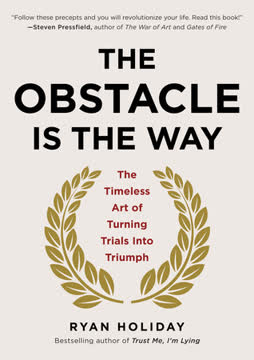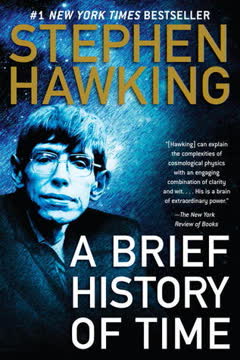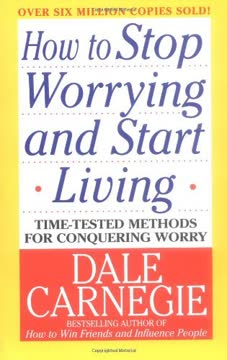Key Takeaways
1. Gates' early passion for computing shaped his entrepreneurial journey
"Sleep is for wimps."
Early fascination with computers. Bill Gates discovered his passion for computing at age 13 when he first encountered a teletype machine at Lakeside School. This early exposure sparked a lifelong obsession, leading him to spend countless hours honing his programming skills.
Entrepreneurial spirit. Gates' drive was evident from the start. At 15, he and Paul Allen created Traf-O-Data, a program to analyze traffic data, earning them $20,000. This early success foreshadowed Gates' future as a tech entrepreneur.
Harvard dropout to tech pioneer. In 1975, Gates left Harvard to co-found Microsoft with Allen, seizing the opportunity to create software for the emerging personal computer market. This bold move set the stage for Microsoft's eventual dominance in the software industry.
2. Microsoft's success driven by innovation and strategic partnerships
"Our slogan from the very beginning was 'a computer on every desk and in every home'."
Vision and execution. Gates' ambitious goal of putting a computer in every home drove Microsoft's strategy from the outset. This clear vision guided the company's product development and marketing efforts for decades.
Key partnerships. Microsoft's breakthrough came through a strategic partnership with IBM in 1980. By retaining the rights to license MS-DOS to other computer manufacturers, Gates positioned Microsoft to become the dominant force in PC operating systems.
Continuous innovation. Microsoft's success was built on a culture of relentless innovation. Key products like Windows, Office, and Internet Explorer reshaped the computing landscape and solidified Microsoft's market dominance.
3. Gates' leadership style: demanding excellence and embracing competition
"I think business is very simple. Profit. Loss. Take the sale, subtract the costs, you get this big positive number. The math is quite straightforward."
Intense work ethic. Gates was known for his grueling work schedule, often working 16-hour days and expecting similar dedication from his employees. This intense focus drove Microsoft's rapid growth and innovation.
Competitive spirit. Gates thrived on competition, both within Microsoft and against rival companies. He fostered a culture of healthy internal competition to drive innovation and wasn't afraid to take on industry giants like IBM and Apple.
Challenging ideas. Gates was famous for his confrontational management style, often challenging employees' ideas in meetings. While sometimes harsh, this approach was designed to stress-test concepts and ensure only the strongest ideas survived.
4. The evolution of Gates from tech mogul to global philanthropist
"With great wealth comes great responsibility: a responsibility to give back to society, a responsibility to see that those resources are put to work in the best possible way to help those most in need."
Shift in focus. In the late 1990s, Gates began to shift his attention from Microsoft to philanthropy. This transition was influenced by his experiences traveling to developing countries and seeing firsthand the challenges faced by the world's poorest people.
Establishing the foundation. In 2000, Bill and Melinda Gates established the Bill and Melinda Gates Foundation, combining their various philanthropic efforts into a single, powerful entity. The foundation quickly became the world's largest private philanthropic organization.
Global impact. The Gates Foundation has made significant contributions to global health, education, and poverty reduction. Key initiatives include:
- Funding for vaccine development and distribution
- Efforts to eradicate polio
- Improving access to education in the United States
- Supporting agricultural development in Africa
5. The Bill and Melinda Gates Foundation: redefining global philanthropy
"If you believe that every life has equal value, [then] it's revolting to learn that some lives are seen as worth saving and others are not."
Strategic approach. The Gates Foundation applies a business-like approach to philanthropy, focusing on measurable results and scalable solutions. This strategy has revolutionized the philanthropic sector, encouraging other organizations to adopt similar methods.
Partnerships and leverage. The foundation works closely with governments, NGOs, and businesses to maximize its impact. By leveraging partnerships and influencing policy, the foundation aims to create sustainable, systemic change.
Key focus areas:
- Global health: Combating infectious diseases and improving maternal and child health
- Global development: Promoting agricultural productivity and financial services for the poor
- U.S. education: Improving high school and postsecondary education outcomes
- Global policy and advocacy: Promoting policies that support the foundation's goals
6. Gates' approach to problem-solving: applying business acumen to social issues
"Catalytic philanthropy takes this interest in the fortunes of others and ties it to our interest in our own fortunes in ways that help advance both."
Data-driven decision making. Gates applies the same analytical rigor to philanthropy that he used in business. The foundation relies heavily on data and research to guide its investments and measure their impact.
Innovation focus. The Gates Foundation encourages innovative approaches to solving global problems. This includes funding high-risk, high-reward research and supporting unconventional solutions to entrenched issues.
Catalytic philanthropy. Gates promotes the concept of "catalytic philanthropy," which aims to:
- Address market failures in areas neglected by governments and businesses
- Use philanthropic capital to attract additional funding from other sources
- Influence policy and public opinion to create lasting change
7. The power of reading and continuous learning in Gates' life and work
"I really had a lot of dreams when I was a kid, and I think a great deal of that grew out of the fact that I had a chance to read a lot."
Voracious reader. Gates is known for his wide-ranging reading habits, consuming books on topics from science and technology to history and economics. This broad knowledge base has informed his business and philanthropic strategies.
Learning as a lifelong pursuit. Gates emphasizes the importance of continuous learning, both for personal growth and professional success. He regularly takes "think weeks" to read and reflect on new ideas.
Sharing knowledge. Gates frequently shares book recommendations and reviews, encouraging others to expand their knowledge. His blog, GatesNotes, serves as a platform for sharing insights from his reading and experiences.
8. Balancing work and personal life: Gates' journey to well-roundedness
"I never took a day off in my twenties. Not one."
Workaholic to family man. In his early career, Gates was notorious for his single-minded focus on Microsoft. However, marriage and fatherhood led him to reassess his priorities and strive for a better work-life balance.
Stepping back from Microsoft. Gates gradually reduced his role at Microsoft, transitioning from CEO to Chief Software Architect in 2000, and eventually leaving his full-time position in 2008 to focus on philanthropy.
Diverse interests. Beyond his work, Gates has cultivated a range of interests, including:
- Playing bridge with Warren Buffett
- Pursuing outdoor activities like golf and tennis
- Collecting rare books and manuscripts
9. Creative capitalism: Gates' vision for solving global challenges
"This hybrid engine of self-interest and concern for others can serve a much wider circle of people than can be reached by self-interest or caring alone."
Bridging business and social good. Gates promotes the idea of "creative capitalism," which encourages businesses to find innovative ways to serve both shareholders and society at large.
Market-based solutions. This approach seeks to harness the power of markets and profit motives to address social and environmental challenges. Examples include:
- Tiered pricing for essential medicines in developing countries
- Incentivizing research into neglected diseases
- Promoting sustainable business practices
Collaborative approach. Creative capitalism emphasizes partnerships between businesses, governments, and non-profits to tackle complex global issues. This multi-sector collaboration aims to create sustainable, scalable solutions to pressing problems.
Last updated:
Review Summary
How to Think Like Bill Gates received mostly positive reviews, with readers praising its insights into Gates' life, business strategies, and philanthropic efforts. Many found it informative and inspiring, highlighting Gates' competitive nature, work ethic, and evolving approach to business and life. Some reviewers appreciated the personal anecdotes and leadership lessons, while others felt it could have delved deeper into Gates' decision-making process. Overall, readers found the book to be a quick, enjoyable read that offered valuable lessons on innovation, persistence, and giving back to society.
Similar Books










Download PDF
Download EPUB
.epub digital book format is ideal for reading ebooks on phones, tablets, and e-readers.








